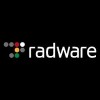Network Engineer
100+ Network Engineer Interview Questions and Answers for Freshers

Asked in Velocis Systems

Q. What are STP, EIGRP dual algorithm, Static Routing, Administrative Value of different protocols, OSPF, TCP header, OSI layers, Different commands for ios upgradation and password recovery etc.
The question covers various networking concepts and protocols such as STP, EIGRP, OSPF, TCP header, and IOS commands.
STP (Spanning Tree Protocol) is used to prevent loops in a network.
EIGRP (Enhanced Interior Gateway Routing Protocol) dual algorithm is a routing protocol used in Cisco networks.
Static Routing is a type of routing where the network administrator manually configures the routes.
Administrative Value is a numerical value assigned to different routing protocols to d...read more

Asked in Capgemini

Q. What is dns? & What will u do secure a website?
DNS stands for Domain Name System. It is a system that translates domain names into IP addresses.
DNS is used to resolve domain names to IP addresses
It works by querying DNS servers to find the IP address associated with a domain name
To secure a website, one can use SSL/TLS certificates to encrypt data transmitted between the website and the user
Other security measures include implementing firewalls, using strong passwords, and keeping software up to date

Asked in ACT Fibernet

Q. What is pppoe What is meaning wan How to configuration routers
PPPoE is a protocol used to connect devices to the internet through a DSL line. WAN stands for Wide Area Network. Routers are configured to connect devices to the internet.
PPPoE stands for Point-to-Point Protocol over Ethernet
It is used to establish a connection between a device and an ISP through a DSL line
WAN is a network that covers a large geographical area, such as the internet
Routers are configured with settings such as IP address, subnet mask, default gateway, and DNS ...read more

Asked in Wipro

Q. What is the subnet mask for CIDR /29?
The subnet mask for CIDR /29 is 255.255.255.248.
CIDR /29 means 29 bits are used for the network portion and 3 bits for the host portion.
To calculate the subnet mask, convert the 29 network bits to 1s and add 3 0s for the host bits.
The result is 255.255.255.248 in dotted decimal notation.

Asked in HDFC Bank

Q. 1.What is Router. Router give the 1st interface and receive the packet and through out the destination. 2.What is Switch. Single network but it is a multiple device network it is a manageable device and storage...
read moreA router is a networking device that forwards data packets between computer networks.
Routers operate at the network layer of the OSI model.
They use routing tables to determine the best path for data packets to travel.
Routers can connect different types of networks, such as LANs and WANs.
Examples of routers include Cisco, Juniper, and TP-Link.
Routers can provide security features such as firewalls and VPNs.
Asked in Truecom Networks

Q. What is VLan, define and explain each layer's of OSI model?
A VLAN is a logical grouping of network devices that share the same broadcast domain. OSI model has 7 layers.
VLAN separates broadcast domains in a switched network
It allows network administrators to group hosts together based on their functions
Each VLAN has a unique ID and can span multiple switches
OSI model has 7 layers: Physical, Data Link, Network, Transport, Session, Presentation, and Application
Network Engineer Jobs




Asked in Radware

Q. What are the definitions and differences between Maximum Transmission Unit (MTU) and Maximum Segment Size (MSS)?
MTU defines the largest packet size for transmission, while MSS specifies the largest segment size for TCP connections.
MTU (Maximum Transmission Unit) refers to the largest size of a packet that can be sent over a network interface.
MSS (Maximum Segment Size) is the largest segment of TCP data that can be sent in a single TCP packet.
MTU is concerned with the entire packet, including headers, while MSS only considers the TCP payload.
For example, an Ethernet MTU is typically 150...read more

Asked in Radware

Q. What is an AS number, how is a BGP neighbor relationship established, and what metrics are used for inbound and outbound routing?
An AS number identifies a network in BGP; neighbor relationships are established through configuration and metrics guide routing decisions.
An AS (Autonomous System) number is a unique identifier assigned to each network for BGP routing.
BGP neighbors are established through the configuration of IP addresses and BGP settings on routers.
Metrics used in BGP include AS path length, next-hop IP, and local preference for inbound and outbound routing decisions.
Example: A shorter AS p...read more
Share interview questions and help millions of jobseekers 🌟


Asked in Genpact

Q. What is STP What is ping What is networking What is osi model What is ip address What are the classes of ip address What is mac adress What is ARP What is RRRP
STP is a network protocol that prevents loops in Ethernet networks. Ping is a network utility used to test connectivity. OSI model is a framework for understanding how networks operate. IP address is a unique identifier for devices on a network. MAC address is a hardware address for network devices. ARP is a protocol used to map IP addresses to MAC addresses. RRRP is not a standard networking term.
STP stands for Spanning Tree Protocol and is used to prevent loops in Ethernet ...read more

Asked in Microland

Q. What actions would you take if the switch enters ROMMON mode after a reboot?
To troubleshoot a switch in ROMMON mode after a reboot, follow these steps.
Check the configuration register value to ensure it is correct
Verify the boot image and configuration file are present and accessible
Attempt to boot the switch manually using the boot command
If necessary, reload the switch with a valid IOS image from a TFTP server
Asked in Cyberjeet

Q. How do you create firewall rules on a Checkpoint device?
To create firewall rules on a Checkpoint device, follow these steps:
Log in to the Checkpoint device using SmartConsole
Navigate to the Firewall tab and select the Access Rules section
Click on the Add Rule button and specify the source, destination, and service for the rule
Set the action for the rule (allow, drop, reject, etc.)
Click on Install Policy to apply the new rule to the device

Asked in Kserve Bpo

Q. Why we use firewall and feature of firewall?
Firewalls are used to protect networks from unauthorized access and have features like packet filtering, NAT, VPN, and IDS/IPS.
Firewalls prevent unauthorized access to a network by filtering incoming and outgoing traffic based on predefined rules.
They can also perform Network Address Translation (NAT) to hide the internal IP addresses from external networks.
Firewalls can establish Virtual Private Networks (VPNs) to securely connect remote users or sites to the network.
They ca...read more

Asked in Kserve Bpo

Q. Do you have experience with Windows OS configuration?
Yes, I have knowledge of Windows OS configuration.
I am familiar with configuring network settings, such as IP addresses and DNS servers.
I know how to manage user accounts and permissions.
I am experienced in installing and updating software and drivers.
I am proficient in troubleshooting common issues, such as blue screens and slow performance.
I am knowledgeable in configuring security settings, such as firewalls and antivirus software.

Asked in Kserve Bpo

Q. What is STP, and why do we use it?
STP stands for Spanning Tree Protocol. It is used to prevent loops in a network and ensure redundancy.
STP is a protocol used in network switches to prevent loops in a network.
It ensures that there is only one active path between any two network devices.
STP works by creating a tree-like structure of the network, with one root bridge and multiple branches.
If a link fails, STP will automatically reroute traffic to an alternate path.
Examples of STP variants include RSTP, MSTP, an...read more

Asked in Kserve Bpo

Q. Why do we use VLANs for different departments?
VLANs are used to logically separate network traffic and improve network performance and security.
VLANs allow for better network management and organization by grouping devices based on their function or location.
They also reduce network congestion by limiting broadcast traffic to devices within the same VLAN.
VLANs can improve network security by isolating sensitive data or devices from the rest of the network.
For example, a finance department may have their own VLAN to keep ...read more

Asked in EbixCash Limited

Q. Crimping to Rj45 & UTP Fibre advantage & disadvantage, benefits with categorires vlan in switching, difference hub & switch
Answering questions related to crimping, UTP fiber, VLANs, and the difference between hub and switch for a Network Engineer position.
Crimping RJ45 connectors onto UTP cables is a common task for network engineers. Advantages include ease of installation and cost-effectiveness. Disadvantages include susceptibility to interference and limited distance.
UTP fiber cables offer higher bandwidth and longer distances than UTP cables. Advantages include immunity to electromagnetic int...read more
Asked in Ns3techsolutions

Q. What is the OSI model and what are its seven layers?
The OSI model is a conceptual framework for understanding network communication across seven layers.
Layer 1: Physical - Deals with the physical connection (e.g., cables, switches).
Layer 2: Data Link - Manages node-to-node data transfer (e.g., Ethernet, MAC addresses).
Layer 3: Network - Handles routing and forwarding (e.g., IP addresses, routers).
Layer 4: Transport - Ensures reliable data transfer (e.g., TCP, UDP).
Layer 5: Session - Manages sessions between applications (e.g.,...read more

Asked in Kserve Bpo

Q. Do you plan to pursue CCNA certification in the future?
Yes, I have plans to pursue CCNA certification in the near future.
I have already started studying for the CCNA exam
I believe that obtaining the CCNA certification will enhance my skills and knowledge in network engineering
I plan to take the exam within the next 6 months
Asked in Fabel Services

Q. What tools are you familiar with?
I operate various network monitoring and troubleshooting tools.
I am proficient in using Wireshark for packet analysis
I have experience with Cisco Prime Infrastructure for network management
I am familiar with SolarWinds for network monitoring
I have used PingPlotter for network troubleshooting
I am comfortable with CLI tools like ping, traceroute, and netstat

Asked in HCLTech

Q. What is network,DHCP, SWITCH, ROUTER AND IP.
Network is a collection of interconnected devices that communicate with each other using protocols.
DHCP (Dynamic Host Configuration Protocol) is a network protocol that automatically assigns IP addresses to devices on a network.
A switch is a networking device that connects devices on a local area network (LAN) and forwards data packets between them.
A router is a networking device that connects multiple networks and forwards data packets between them.
IP (Internet Protocol) is ...read more
Asked in Cyberjeet

Q. How do you implement BGP in a Cisco Router?
BGP can be implemented in a Cisco Router by configuring the router as a BGP router and establishing BGP peering with other routers.
Configure the router as a BGP router using the 'router bgp' command.
Specify the AS number using the 'bgp autonomous-system' command.
Configure BGP neighbors using the 'neighbor' command.
Configure BGP attributes such as network statements, route maps, and access lists.
Verify BGP peering using the 'show ip bgp summary' command.

Asked in Kserve Bpo

Q. How do you configure HSRP, and what is its purpose?
HSRP is a protocol used to provide redundancy for IP networks. It allows two or more routers to share a virtual IP address.
Configure HSRP on two or more routers with the same group number and virtual IP address
One router is elected as the active router and forwards packets sent to the virtual IP address
The other router(s) are in standby mode and take over if the active router fails
HSRP can be used to provide default gateway redundancy for hosts on a LAN
HSRP can also be used f...read more

Asked in Quess

Q. Update the MW configuration as per the LB plan and pass it through the VLAN by LAN or WAN.
To update the mw configuration as per LB plan and pass through the VLAN by LAN or WAN, you need to configure the load balancer settings and ensure proper routing.
Configure the load balancer to distribute traffic evenly across multiple servers
Update the mw configuration to align with the load balancer plan
Ensure VLAN settings are correctly configured for LAN or WAN transmission

Asked in Sify Technologies

Q. basics of your domain what is a diode?
A diode is an electronic component that allows current to flow in only one direction.
It has two terminals, an anode and a cathode.
It is commonly used in rectifiers to convert AC to DC.
It can also be used as a voltage regulator or a signal modulator.
Examples include the 1N4148 and the 1N4001 diodes.

Asked in Insight Business Machines

Q. What is EtherChannel protocol?
Ether channel protocol is a technology used in networking to combine multiple physical links into a single logical link for increased bandwidth and redundancy.
Ether channel protocol is also known as link aggregation or port trunking.
It allows multiple physical links to be bundled together to form a single logical link.
This increases the overall bandwidth and provides redundancy in case of link failures.
Ether channel protocol is commonly used in data centers and enterprise net...read more

Asked in Wipro

Q. What is VLAN?
VLAN stands for Virtual Local Area Network. It is a logical grouping of devices on a network based on function, department or application.
VLANs allow for better network management and security by separating traffic into different broadcast domains.
Devices in different VLANs cannot communicate with each other without a router or layer 3 switch.
VLANs can be configured based on port, MAC address or protocol.
Example: VLAN 10 for finance department, VLAN 20 for marketing departmen...read more

Asked in Radware

Q. What should you check if IPSEC Phase 2 is down?
Check configurations, logs, and connectivity to troubleshoot IPSEC Phase 2 issues.
Verify the IPSEC configuration on both ends matches (e.g., encryption and integrity algorithms).
Check the security associations (SAs) to ensure they are established correctly.
Examine the logs for any error messages related to Phase 2 negotiations.
Ensure that the firewall rules allow the necessary traffic for IPSEC.
Test connectivity between the peers using ping or traceroute to rule out network i...read more

Asked in Apex Solutions

Q. Routing is finding easy and fastest path from source to destination...
Routing is the process of determining the best path for data packets to travel from a source to a destination.
Routing involves analyzing network paths and selecting the most efficient route.
Routers use routing tables to make decisions on how to forward packets.
Dynamic routing protocols like OSPF and BGP help routers exchange routing information.
Examples of routing protocols include RIP, EIGRP, and IS-IS.

Asked in Aurus IT Solutions

Q. EThernet channel BGP How to pass traffic in Ethernet chennel
Ethernet channel and BGP are used to pass traffic. Traffic can be passed by configuring the Ethernet channel and BGP protocol.
Ethernet channel is a link aggregation technology that allows multiple physical links to be combined into a single logical link.
BGP (Border Gateway Protocol) is a routing protocol used to exchange routing information between different networks.
To pass traffic in Ethernet channel, the channel needs to be configured on both ends of the link and the devic...read more

Asked in Nokia Networks

Q. What is the telecom & what is the network
Telecom refers to communication over a distance using technology, while network refers to interconnected devices sharing resources and information.
Telecom involves transmitting data over long distances using various technologies like telephone lines, satellites, and fiber optics.
Network refers to a group of interconnected devices that can communicate and share resources, such as computers, servers, and printers.
Telecom is essential for establishing communication links between...read more
Interview Questions of Similar Designations
Interview Experiences of Popular Companies





Top Interview Questions for Network Engineer Related Skills



Reviews
Interviews
Salaries
Users

















